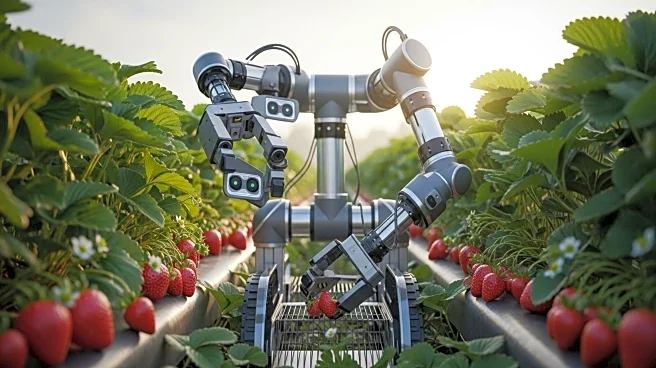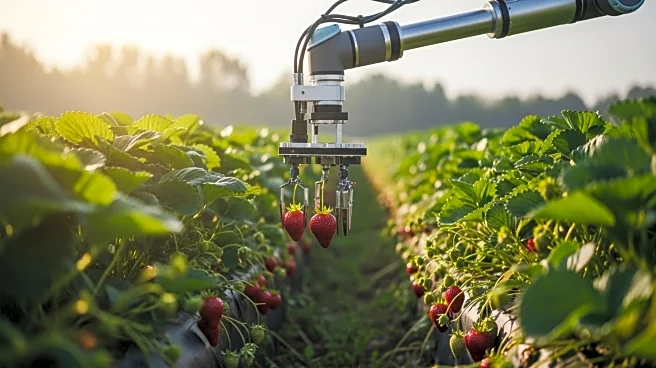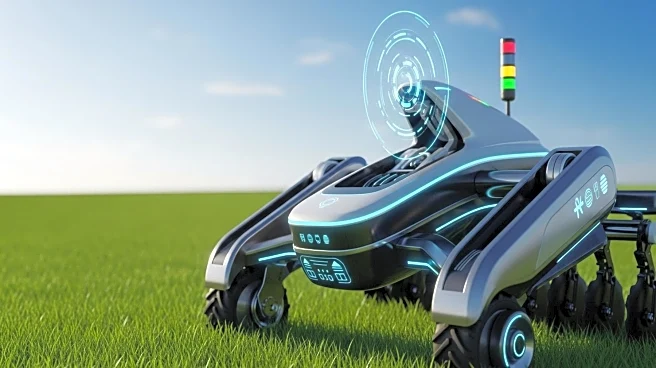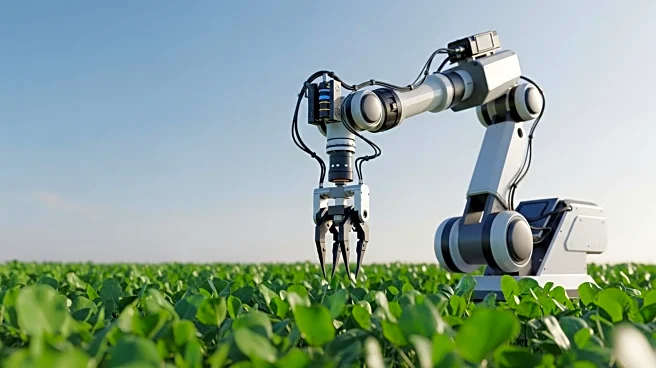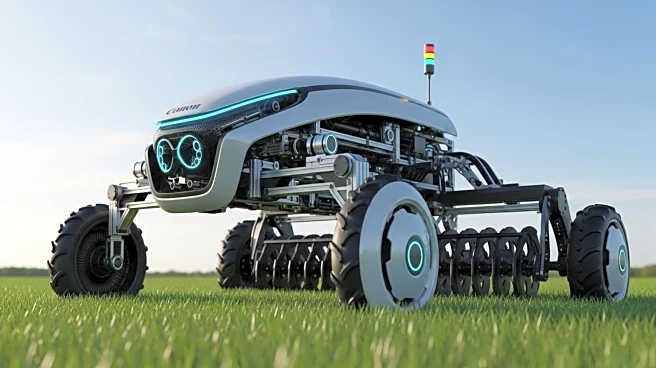What's Happening?
Washington State University researchers have developed a robotic system designed to improve the efficiency of strawberry harvesting. The robot utilizes an artificial intelligence vision system, soft silicone fingers, and a fan to gently move leaves aside, allowing it to access hidden strawberries. In tests, the robot successfully detected strawberries 80% of the time and classified hidden berries with 93% accuracy. This innovation aims to address labor shortages in the $20 billion strawberry market, which is projected to grow by 6% annually over the next decade. The research, led by Zixuan He, was published in the journal Computers and Electronics in Agriculture.
Why It's Important?
The development of this robotic harvester is significant as it addresses labor shortages that have been a persistent issue in the strawberry industry. By improving the efficiency of harvesting, the technology could help reduce costs and increase yields, benefiting growers and consumers alike. The robot's ability to navigate complex field conditions and identify hidden fruit represents a major advancement over previous systems, which were primarily designed for greenhouse or table-top environments. This innovation could potentially be adapted for other crops, further enhancing agricultural productivity.
What's Next?
Further improvements are needed to enhance the speed and efficiency of the robotic system, which currently takes 20 seconds to pick a berry. Researchers are exploring the use of the fan system for other crops with similar occlusion challenges, such as grapes. While the robot is unlikely to fully replace human labor, it could serve as a valuable supplement, especially during labor shortages. Continued development and testing will focus on making the system commercially viable for widespread use in open-field conditions.
Beyond the Headlines
The introduction of robotic harvesting technology raises questions about the future of agricultural labor and the potential displacement of workers. However, the technology is more likely to complement human labor rather than replace it entirely. Ethical considerations regarding the impact on employment and the need for retraining programs for displaced workers may arise as the technology becomes more prevalent.
